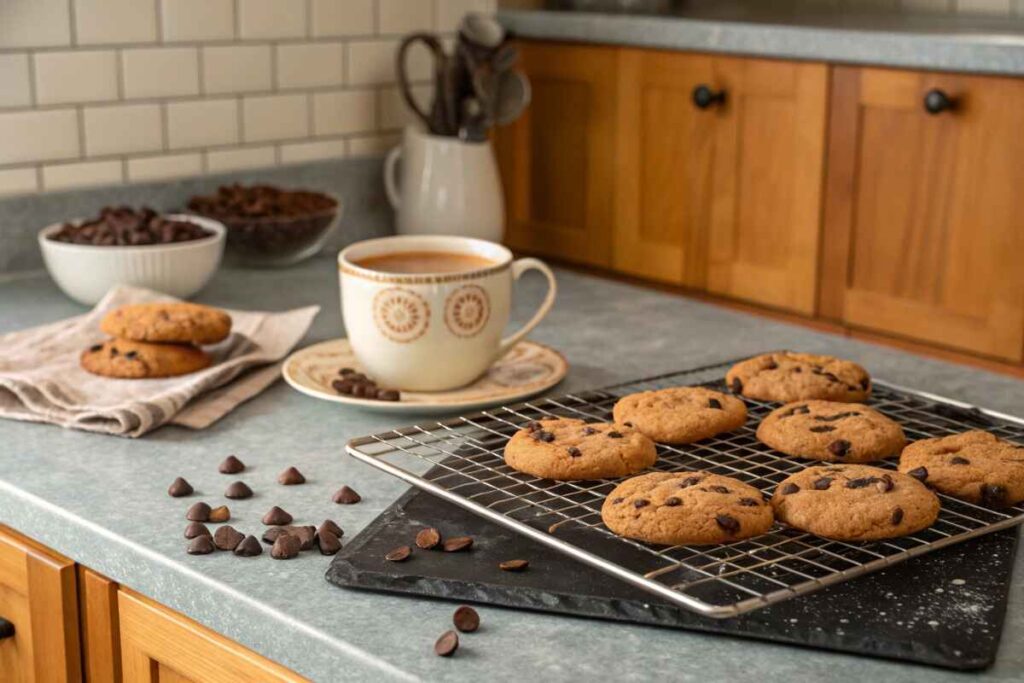Sugar-free chocolate has become a popular alternative for those who crave the deliciousness of chocolate without the guilt of sugar. Whether you’re managing diabetes, following a low-carb diet, or simply trying to cut down on sugar, sugar-free chocolate offers a satisfying option. This article dives deep into the world of sugar-free chocolate, covering its definition, benefits, types, and even how to make it yourself. You’ll also find answers to common questions and practical tips for choosing the best options. Let’s embark on this sweet yet sugar-free journey!
Table of contents
What is Sugar-Free Chocolate?
What Defines Sugar-Free Chocolate?
Sugar-free chocolate is exactly what it sounds like: chocolate made without traditional sugar. Instead of relying on sucrose (table sugar) for sweetness, it uses alternative sweeteners like stevia, monk fruit, or sugar alcohols such as erythritol. These substitutes offer the same sweet taste without causing blood sugar spikes, making them an excellent choice for diabetics or anyone aiming to reduce sugar intake.
While sugar-free chocolate tastes similar to regular chocolate, it often has subtle differences in flavor and texture. Thanks to advancements in food technology, however, these differences are becoming less noticeable.
Key Ingredients in Sugar-Free Chocolate
The main components of sugar-free chocolate include:
- Cocoa solids or cocoa powder: The foundation of all chocolates.
- Sweeteners: Ingredients like stevia, monk fruit extract, or sorbitol replace sugar.
- Milk or milk alternatives: Common in sugar-free milk chocolate.
- Fats and emulsifiers: Cocoa butter and lecithin provide a smooth texture.
The Difference Between Sugar-Free, No Sugar Added, and Regular Chocolate
Understanding labels is crucial. Here’s how these types differ:
- Sugar-free chocolate contains no added sugar and uses alternative sweeteners.
- No sugar added chocolate may still contain natural sugars from ingredients like milk or nuts but lacks additional sugar.
- Regular chocolate is sweetened with refined sugar and typically has a higher glycemic impact.
By replacing sugar with alternative sweeteners, sugar-free dark chocolate and other varieties deliver the same indulgent experience with fewer calories and carbs. But how does this choice impact health? We’ll explore that next!
Benefits of Sugar-Free Chocolate
Health Benefits of Consuming Sugar-Free Chocolate
One of the biggest draws of sugar-free chocolate is its potential health benefits. Unlike regular chocolate loaded with refined sugars, sugar-free varieties can support better health without sacrificing flavor.
For starters, sugar-free chocolate has a lower glycemic index, which means it causes minimal spikes in blood sugar levels. This is especially beneficial for diabetics or individuals following low-carb diets. Additionally, dark sugar-free chocolate is rich in antioxidants like flavonoids, which may improve heart health and reduce inflammation.
It’s also a smart choice for weight-conscious individuals. By replacing traditional sugar with low-calorie sweeteners, it offers the same indulgent experience but with fewer calories.
How Sugar-Free Chocolate Fits into a Low-Carb Diet
For those on keto or low-carb diets, sugar-free chocolate is a game-changer. Since these diets focus on minimizing carbohydrate intake, regular chocolate is often off-limits due to its high sugar content. Enter sugar-free chocolate: it’s packed with rich cocoa flavor without derailing your diet.
For example, dark sugar-free chocolate pairs wonderfully with low-carb snacks like nuts or cheese. And because it’s sweetened with alternatives like stevia or monk fruit, it can satisfy cravings without kicking you out of ketosis.
Advantages for People with Diabetes
Managing diabetes can feel restrictive, but sugar-free milk chocolate and similar options provide a guilt-free treat. By avoiding refined sugars, these chocolates don’t cause significant blood sugar spikes. Plus, they often contain beneficial ingredients like fiber or healthy fats, which can further stabilize blood sugar levels.
If you’re looking for other creative ways to incorporate dietary alternatives, the lactose-free butter guide on CooFoodKing offers insight into complementing dietary preferences with delicious substitutions.
Types of Sugar-Free Chocolate
Dark Sugar-Free Chocolate
Sugar-free dark chocolate is a favorite among health enthusiasts. With a high cocoa content, it’s rich, decadent, and packed with antioxidants. Because it contains no sugar, it’s perfect for those on keto, diabetic, or low-carb diets. Its bold flavor pairs well with coffee, fruits, or even a glass of red wine.
Milk Sugar-Free Chocolate
If you prefer a creamier, sweeter flavor, sugar-free milk chocolate is your go-to. Made with cocoa, milk solids, and alternative sweeteners, it offers the comforting taste of traditional milk chocolate without the sugar. This variety is excellent for baking or as a midday snack.
Sugar-Free Chocolate Chips and Syrups
Looking to add chocolatey goodness to your desserts? Sugar-free chocolate chips are perfect for cookies, muffins, or pancakes. And sugar-free syrups? They’re a dream for hot cocoa, coffee, or drizzling over ice cream. These versatile options make it easy to enjoy the flavors you love without compromising your dietary goals.
How Sugar-Free Chocolate is Made

Substituting Sugar: Sweeteners Used in Sugar-Free Chocolate
Creating sugar-free chocolate starts with finding the right sweeteners. Traditional sugar is replaced by alternatives like stevia, monk fruit, or sugar alcohols such as erythritol. These substitutes provide sweetness without the harmful effects of sugar, such as spiking blood sugar or contributing to tooth decay.
Among these options, monk fruit extract stands out for its natural origin and zero-calorie profile, while stevia offers a plant-based alternative with minimal aftertaste. Sugar alcohols like xylitol and maltitol are also popular for their similar sweetness to sugar, although they may have a slight impact on digestion.
The Chocolate Manufacturing Process Without Sugar
The process of making sugar-free chocolate closely resembles that of regular chocolate. It begins with roasting cocoa beans, grinding them into a paste, and separating cocoa solids from cocoa butter. These components form the base of the chocolate.
Next, the sweetener is added. This step requires careful mixing to ensure the sweetener blends evenly without altering the smooth texture of the final product. Ingredients like lecithin and vanilla extract are added to enhance the chocolate’s flavor and consistency.
Finally, the chocolate is tempered to achieve a glossy finish and prevent blooming (those white streaks sometimes seen on chocolate). It’s then molded into bars, chips, or other forms.
Challenges in Achieving the Same Taste and Texture
Replicating the taste and texture of traditional chocolate without sugar isn’t easy. Sweeteners like stevia can sometimes leave a bitter aftertaste, and sugar alcohols may not caramelize the same way sugar does. Manufacturers use advanced techniques to mask these differences, ensuring that sugar-free varieties taste just as indulgent.
For more tips on balancing flavors in recipes, explore other culinary insights on CooFoodKing.
Popular Brands and Products
Top Brands for Sugar-Free Chocolate
Several brands specialize in sugar-free chocolate, offering high-quality, delicious options. Lily’s Sweets is a top choice for its range of sugar-free dark and milk chocolate bars, sweetened with stevia. Another favorite is ChocZero, known for its creamy textures and sugar-free syrups.
For those who prefer organic options, Hu Kitchen offers sugar-free dark chocolate made with all-natural ingredients. Each brand focuses on delivering rich flavor while maintaining a health-conscious profile.
Best Sugar-Free Chocolate for Baking
When it comes to baking, sugar-free chocolate chips are a must-have. Lily’s and ChocZero both offer baking chips that melt beautifully, making them perfect for cookies, brownies, and even ganache. For keto-friendly baking, look for chips with low net carbs and no artificial ingredients.
Sugar-free syrups are also a game-changer. Use them to drizzle over pancakes, mix into batters, or add to beverages.
Reviews of Popular Products in the Market
The market for sugar-free chocolate is growing rapidly, and customer reviews can help you pick the best options. Dark chocolate enthusiasts often praise Lakanto’s sugar-free bars for their robust flavor, while milk chocolate lovers gravitate toward Russell Stover’s no-sugar-added line.
To discover unique recipes and how to incorporate these products into your cooking, check out our guides on CooFoodKing.
Recipes with Sugar-Free Chocolate

How to Make Sugar-Free Chocolate at Home
Making your own sugar-free chocolate is easier than you might think! Start by melting high-quality cocoa butter over low heat. Once melted, mix in unsweetened cocoa powder, your preferred sugar substitute (like stevia or monk fruit), and a pinch of vanilla extract. Stir the mixture until smooth, then pour it into molds and let it set in the fridge.
This homemade chocolate is versatile and can be customized. Add chopped nuts, dried fruits, or even a sprinkle of sea salt for extra flavor. Not only is it healthier, but it’s also fun to make!
Sugar-Free Hot Chocolate Recipe
Warm yourself up with a comforting cup of sugar-free hot chocolate. To make it, heat unsweetened almond milk or any milk alternative in a saucepan. Whisk in sugar-free chocolate chips, cocoa powder, and a sweetener of your choice until smooth. Add a dash of cinnamon or a drop of peppermint extract for a festive twist.
This drink is perfect for cozy nights and pairs beautifully with low-carb snacks. It’s indulgent without the guilt, making it a favorite among keto and diabetic communities.
Sugar-Free Chocolate Chip Cookies Recipe
For a delicious treat, try baking sugar-free chocolate chip cookies. Start by creaming butter with a low-carb sweetener like erythritol. Mix in almond flour, baking soda, and vanilla extract. Fold in sugar-free chocolate chips before scooping the dough onto a baking sheet. Bake until golden brown, and enjoy warm cookies with a gooey center!
Low-Carb and Sugar-Free Candy Ideas
Looking for snackable options? Melt sugar-free chocolate and pour it into small candy molds. Add layers of peanut butter or coconut cream for a low-carb twist on classic candies. Freeze until firm and store in an airtight container for quick, sugar-free indulgence.
Myths and Misconceptions About Sugar-Free Chocolate
Is Sugar-Free Chocolate Truly Sugar-Free?
Many people assume that sugar-free chocolate contains zero sugar, but that’s not always the case. While it lacks added sugar, some chocolates may contain natural sugars from ingredients like milk or nuts. Always check the label for clarity.
Does Sugar-Free Mean Calorie-Free?
Another common misconception is that sugar-free chocolate is calorie-free. While it’s lower in calories compared to traditional chocolate, it still contains calories from cocoa, fats, and sweeteners. It’s important to enjoy it in moderation.
Impact of Sugar-Free Chocolate on Weight Loss
Some believe that eating sugar-free chocolate guarantees weight loss. While it’s a healthier alternative, the overall calorie count still matters. Pairing it with a balanced diet is key to achieving fitness goals.
By debunking these myths, you can make informed choices about adding sugar-free chocolate to your lifestyle.
FAQs About Sugar-Free Chocolate
Is Sugar-Free Chocolate Actually Sugar-Free?
Yes, sugar-free chocolate is free from added sugars, but it’s essential to read labels carefully. While no refined sugar is included, some varieties may have trace amounts of natural sugars from milk or other ingredients. Sweeteners like stevia, erythritol, and monk fruit replace sugar, keeping the product suitable for those managing diabetes or following low-carb diets.
Which Chocolate Does Not Have Sugar?
Chocolates labeled as “sugar-free” or “no sugar added” are ideal for avoiding sugar. Options like sugar-free dark chocolate and sugar-free milk chocolate offer sweetness without the glycemic impact of regular chocolate. Brands like Lily’s and ChocZero provide trusted sugar-free options.
Does Sugar-Free Really Mean Sugar-Free?
In most cases, yes—but always double-check! Some chocolates marketed as “no sugar added” may still have sugar alcohols or natural sugars from ingredients like lactose in milk. Ensure the sweeteners used align with your dietary preferences.
Which Chocolate is Best for Diabetes?
Sugar-free chocolate is an excellent choice for people with diabetes. Opt for dark varieties with high cocoa content, as they have lower carbs and more antioxidants. Check for sweeteners like stevia or monk fruit, which won’t spike blood sugar levels.
Choosing the Best Sugar-Free Chocolate for You
Factors to Consider When Buying Sugar-Free Chocolate
When selecting sugar-free chocolate, look for products with simple, high-quality ingredients. Focus on chocolates made with alternative sweeteners like erythritol, stevia, or monk fruit. Avoid those with hidden sugars or artificial additives.
Another key factor is the cocoa content. Dark chocolates with a higher percentage of cocoa (70% or more) often have richer flavors and additional health benefits. For milk chocolate fans, ensure the product uses low-carb milk alternatives to keep it suitable for your diet.
How to Read Labels and Identify Hidden Sugars
Always check the nutrition label and ingredient list before buying. Words like “no sugar added” or “reduced sugar” don’t always mean completely sugar-free. Watch for sugar alcohols or terms like maltitol that might impact your digestion or blood sugar levels.
Pairing Sugar-Free Chocolate with Other Foods
Pairing sugar-free chocolate with healthy snacks like nuts, berries, or low-carb crackers can elevate its flavor. For a gourmet experience, enjoy dark chocolate with a glass of red wine or use sugar-free syrups to create delicious coffee drinks.
Armed with these tips, you’ll feel confident choosing the best sugar-free chocolate to fit your lifestyle.
The Future of Sugar-Free Chocolate
Trends in the Sugar-Free Chocolate Industry
The sugar-free chocolate market is rapidly expanding as health-conscious consumers demand indulgent yet guilt-free options. Brands are now focusing on creating chocolates that not only cater to low-carb and diabetic-friendly diets but also align with sustainable and organic practices.
Another trend gaining momentum is the rise of keto-friendly chocolate, offering low-carb alternatives for those following a ketogenic lifestyle. Additionally, demand for premium products like sugar-free dark chocolate and artisanal treats is on the rise, as consumers seek high-quality, sophisticated flavors without added sugars.
Innovations in Sweeteners and Flavors
Manufacturers are investing in innovative sweeteners like monk fruit and allulose, which mimic sugar’s sweetness without calories or aftertaste. These alternatives provide a natural edge while maintaining a low glycemic index. Moreover, flavor innovations are adding excitement to the market, with options like sugar-free milk chocolate infused with exotic ingredients such as sea salt, chili, or lavender.
With advancements in sweetening technology and consumer demand for healthier options, the future of sugar-free chocolate is both promising and delicious.
